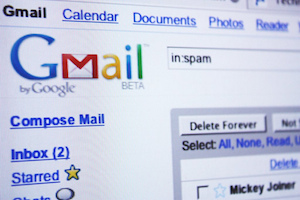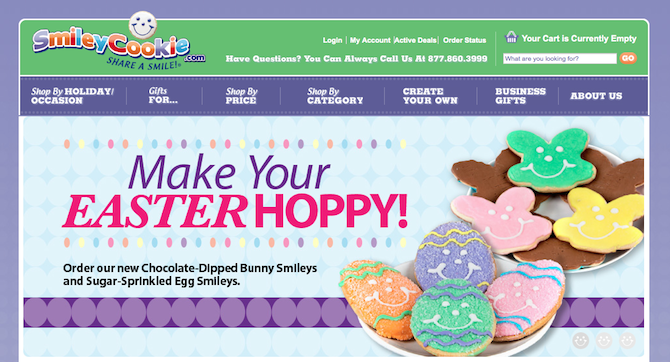How’s your drip?
I’m not talking about an IV drip or coffee drip here. I’m talking about email marketing campaigns. How’s it doing?
If your face just went pale or your eyebrows are furrowed in confusion, don’t sweat it. There’s never been a time like the present to develop a drip campaign for your online store.
If you’re not sure what a successful campaign looks like, not to worry. We’ve put together a few essentials to get you started, highlighted by a few examples of companies out there doing it right.
The Role of Drip Campaigns
↑ Back to top Also referred to as lead nurturing, drip campaigns are typically a series of emails designed to be delivered on a set schedule with the aim of educating a subscriber and moving them steadily down your sales funnel toward the moment of conversion.
Also referred to as lead nurturing, drip campaigns are typically a series of emails designed to be delivered on a set schedule with the aim of educating a subscriber and moving them steadily down your sales funnel toward the moment of conversion.
The idea is really to move someone from just a visitor to your site to someone who is interested in your products to someone who is ready to add an item to the cart and complete the sale. There are obvious benefits — you boost sales — but there are some less obvious ones we’d like to make mention of here. For instance, a drip campaign can:
- Keep people informed about your brand
- Educate people about your product
- Keep your company visible to your potential customers, even when they’re not on your site.
Another great thing is it’s easy to keep tabs on. That is, you can monitor the number of subscribers you receive, how many people unsubscribe, how many click on links, and how many convert from your emails. It provides a lot of information that you can use to further increase sales later on.
Four Key Considerations When Setting up a Drip Campaign
↑ Back to topBefore you start setting up your list or writing up those emails, you do need to keep a few things in mind. There are actually four key things that you need to consider as you go through the set up process:
Content
 I’ve seen many email campaigns that just aren’t very good in the content department, and that has a negative effect on its overall impact. And while the other three things I’m going to discuss are important, without good content you don’t have much of anything.
I’ve seen many email campaigns that just aren’t very good in the content department, and that has a negative effect on its overall impact. And while the other three things I’m going to discuss are important, without good content you don’t have much of anything.
A good email needs to provide value to its recipient. Go too sales driven and it could be interpreted as spam. Make it too short and your subscribers won’t be hooked. Make it too long and they’ll drift away before getting the chance to click. A few tips:
- Offer value. If you’re not educating or entertaining your subscribers in each email, you’re not doing it right. At the same time, your content needs to be focused on encouraging prospects to take the next step toward making a purchase. It’s a delicate balance, but necessary if you want to see results.
- Make it scannable. You know how you’re supposed to write content online, right? Plenty of short paragraphs and subheadings with lists to break it all up? Well, you need to apply this to your emails as well. Only make the text even less dense. Make it so readers won’t be able to miss your awesome content and convincing call to action.
- Include a review or two. Since your ultimate goal is encouraging sales, you need to make it clear that what you have to offer is worth your prospects’ time (and money). Including a review or testimonial in your emails is a great way to show that you know what you’re doing and that other people think so, too.
Frequency
With your content all sorted out, your next task actually makes up the “drip” portion of your drip campaign. It’s all about how frequently you send out those emails. As a general rule, you should start out with a higher frequency when someone first subscribes. This way, you’re in their inbox every day, acting as a reminder of your site and what you offer.
Then it can slow down to every other day. Finally, it should rest at what you want your standard newsletter rate to be. Once a week is pretty typical.
Along with frequency comes timing, in terms of what time of day you should be sending out these emails. There’s no hard and fast rule here. Your best bet is to just monitor your campaign — which I’ll talk about more in a moment — and see if there’s a time of day that seems to result in more activity from your subscribers.
You can always adjust your campaign’s frequency depending on what you’re trying to currently push. For instance, if you sell food items, the holidays are going to be a time you’ll want to increase the frequency of each email to keep your subscribers in-the-know about what you offer. It’s also a good time to highlight any specials or discounts you have going.
Segmentation
No good drip campaign is complete without proper segmentation. Not to worry – you don’t need to write two entirely different campaigns to be effective. Rather, you just need to make some adjustments to target different segments of your audience. Ideally, you want to make each subscriber feel as though they are receiving an email specifically designed for them.
The closer you get to this ideal, the better. To set this up properly, you’ll need multiple landing pages. This way, you’ll know which “segment” a subscriber belongs to from the moment they sign up and you can send out emails accordingly.
Optimization
Any good drip campaign needs to have monitoring in place from the start. Most email marketing services provide this, thankfully. A few primary things to measure include open rates, the number of click throughs, and the number of conversions you received from those clicks. Looking at this data will help you to figure out what’s working with your campaign and where along the sales funnel you need to make changes.
So, if you have a high open rate but no clicks, you know there’s something wrong with your content. And if you drive a lot of traffic to your site through these emails but don’t make sales, you know there’s an issue with the landing page. And so on.
Drip Campaigns Done Right
↑ Back to top
If you’re anything like me, you learn best by example. That’s why I wanted to highlight two drip campaigns that I think are done very well.
First up is SmileyCookie.com. The gourmet cookie site had a cart abandonment issue and utilized a drip campaign to remedy the problem. In fact, according to a MarketingSherpa case study, the campaign consisted of an immediate email, an email sent 23 hours later that included a discount, and an email sent four days later with an bigger discount. The site saw a 29% improvement in cart abandonment once the campaign was put into place.
Another campaign that’s been really effective is the one put in place by Chris Lema: “Blog More Regularly.” It’s a 4-week course to help people learn how to blog on a more consistent basis. It’s completely free and offers plenty of useful, actionable information. But it also includes plenty of promotion of his books. It’s a clever way of keeping himself visible to subscribers without coming across too sales-y.
Conclusion
↑ Back to topA good drip campaign will vary in content from industry to industry, but one truth remains: good content sent at the right time that’s optimized over time based on what works can increase sales for any e-commerce site, on any platform.
What the best drip campaign you’ve ever seen? I’d love to hear all about it in the comments!
Image source: jDevaun; notoriousxl
About





I do like Chris Lema’s example, but I must say that I’m not a fan of the SmileyCookie approach. It may improve cart abandonment in the short term, but it is also training those customers to never buy immediately and wait for a discount instead. Plus, whenever I receive an enticement offer like that I find that it increases my mistrust in the company because they didn’t give me their best at the start.
Yeah, I think there’s a fine line there. Worth pointing out that perhaps they’re focused on acquisition right now, while taking the hit on revenue. If they do a great a job with their product, word of mouth will help them out.